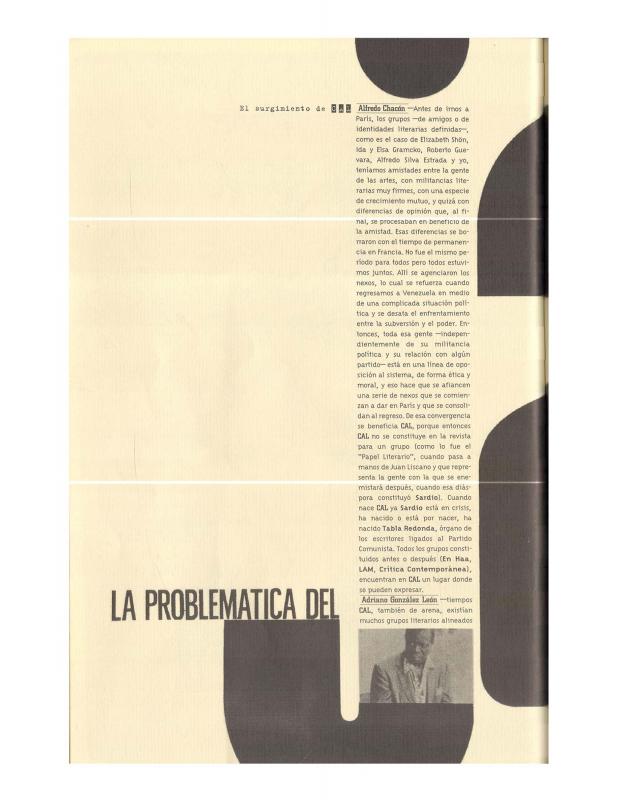In addition to presenting a review from a historical perspective, the catalogue for the exhibition CAL: la última vanguardia (Caracas: Museo de Arte Contemporáneo de Caracas Sofía Imber, 1996) is a valuable testimony by the participants in that important publishing project. The journal CAL (1962–67), which included criticism, art and literature, was a representative example of art integration; those who make statements in this text insist on this point. Just as plurality and difference represented the thinking of the 1960s, the participants believed that the value of CAL was precisely that it brought together different currents into one avant-garde initiative that did not belong to anyone in particular. Far from responding to one specific aesthetic or any “official” discourse, CAL integrated that common and diverse opposition to the system, giving it a voice and transmitting a visual code. Both the distance it kept from the established channels as well as the catalyzing effect of plurality were metaphors for an experience of an incipient democratic process that fostered expression and creative freedom, in spite of the fierce criticism unleashed against it. The graphic design by Nedo [Mion Ferrario] (1926–2001) is noteworthy. As art director of the journal, he explains the publishing process (a bit improvised, he admits) as well as the freedom of association that made CAL a milestone in the history of design in Venezuela. The construction of a text starting with images goes hand in hand with the exploration of new fields of artistic expression: no sooner are new problems discovered than new graphic solutions are developed. The interest of CAL in an integrated approach was evidence of a new concern about the idea of “culture,” in a broad sense and linked to the literary and journalistic outlook of its founders.
The statements collected here show awareness of the multiplicity of art and literary groups operating when the individuals were just getting started in their respective arts. In addition, they show that CAL was a vehicle to convey the great voices of Venezuelan culture. It is worth noting that the journal paid for all contributions—including those from figures little known at the time—thus setting a precedent for a way of conceiving (and recognizing) the cultural work done in Venezuela.
[Regarding other texts and testimonies written by various writers and published in the journal CAL, see in the ICAA digital archive “El diseño” (doc. no. 1169217); “El surgimiento de CAL” (doc. no. 1169178); and by Perán Erminy “CAL: Crítica, arte, literatura” (doc. no. 1169078)].



